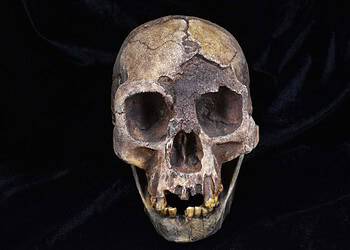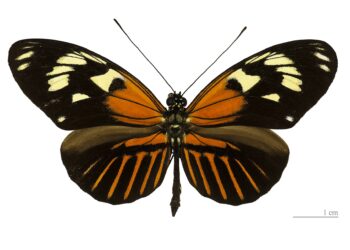
In the icy wilderness of Antarctica, where glaciers now dominate the landscape, scientists have unearthed a fossil that rewrites the story of modern birds. The nearly complete skull of Vegavis iaai, a duck-sized bird that lived 69 million years ago, reveals that modern birds — those with toothless beaks and specialized brains — were already thriving alongside dinosaurs just before a catastrophic asteroid wiped out their reptilian neighbors.
Birds are the only living descendants of dinosaurs, with the earliest birds derived from a clade of theropod dinosaurs named Paraves. The assumption has always been that ancient birds resembling today’s avian diversity only appeared after the dinosaurs went extinct. This would have followed the Cretaceous–Paleogene extinction event, which left many ecological niches vacant.
But these new findings show that modern birds originated millions of years earlier than previously thought. They also offer a glimpse into how some species survived one of Earth’s most devastating mass extinctions.
A Duck-Like Diver from the Age of Dinosaurs
The Vegavis iaai fossil, discovered during a 2011 expedition to the Antarctic Peninsula, is one of the most remarkable finds in paleontology. Unlike earlier fossils of this species, which lacked a skull, this specimen provides a clear view of the bird’s anatomy. “The new fossil shows Vegavis is undoubtedly a modern bird,” Juan Benito Moreno, a fossil bird expert at the University of Cambridge, who was not involved in the study, said in an interview with CNN.
The skull features a toothless beak, a hallmark of modern birds, and a brain shape characteristic of today’s avian species. But what truly sets Vegavis apart is its specialized jaw muscles, which allow it to snap its beak shut underwater — a trait seen in modern diving birds like loons and grebes. It also swam like these birds, using its feet rather than its wings as penguins do.
“This bird was a foot-propelled pursuit diver,” said Christopher Torres, the study’s lead author and a paleontologist at the University of the Pacific. “It used its legs to propel itself underwater as it swam, hunting for fish.”
This lifestyle suggests that Vegavis was well-adapted to its environment. During the Late Cretaceous, Antarctica was not the frozen wasteland it is today. Instead, it was a temperate, forested region with a cool climate (average temperatures hovered around 7°C) and rich marine ecosystems. “We envision that it was doing this pursuit diving in a nearshore, marine environment,” said Patrick O’Connor, a co-author of the study and an evolutionary biologist at Ohio University.
Vegavis likely lived in nearshore marine environments, diving for fish in the cool waters while sharing the landscape with dinosaurs like Imperobator and Morrosaurus. Its ability to thrive in this environment may have been key to its survival during the tumultuous times that followed.
A Survivor’s Tale

For decades, scientists believed that modern birds evolved rapidly after the asteroid impact that wiped out the dinosaurs 66 million years ago. But Vegavis lived at least 2 million years before that event, suggesting that modern birds were already diversifying during the Cretaceous period.
“This fossil represents the earliest member of the entire radiation of modern birds that we see around us today,” O’Connor said. “It’s a critical piece of the puzzle.”
The study also sheds light on how some birds survived the mass extinction. Antarctica’s vast distance from the asteroid impact site in present-day Mexico may have provided a refuge for species like Vegavis.
“What happens to the survivors? What determines who survives and what they look like after such a catastrophic event?” Torres asked.
Interestingly, Vegavis is closely related to another fossil bird, Conflicto antarcticus, which lived shortly after the extinction event. This rare pairing of sister taxa — one from before the extinction and one from after — could provide valuable insight into how birds adapted to a changing world.
Although it’s not easy, scientists continue to explore Antarctica’s frozen landscapes, hoping to uncover more fossils that will help piece together the story of how birds and other life persisted through one of Earth’s darkest chapters.
“Few birds are as likely to start as many arguments among paleontologists as Vegavis,” Torres said. “This new fossil is going to help resolve a lot of those arguments.” And perhaps, in doing so, it will reveal even more about the origins of the birds that fill our skies today.
The findings appeared in the journal Nature.






